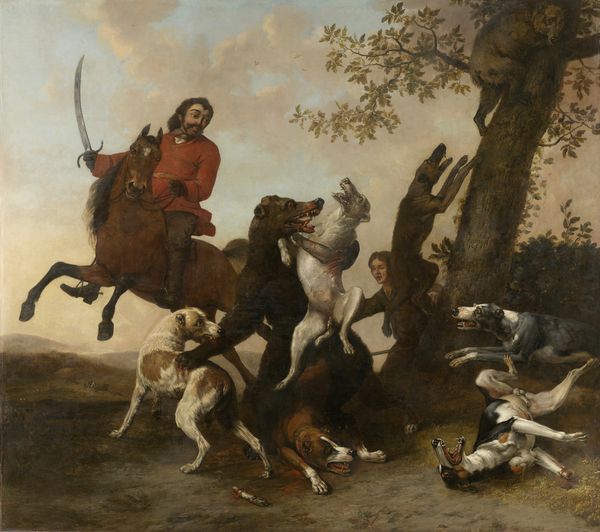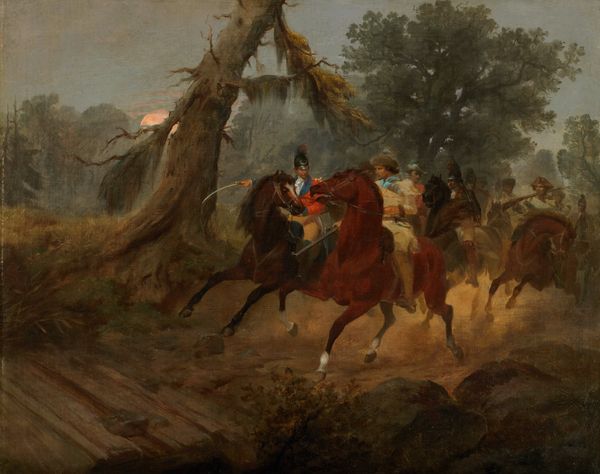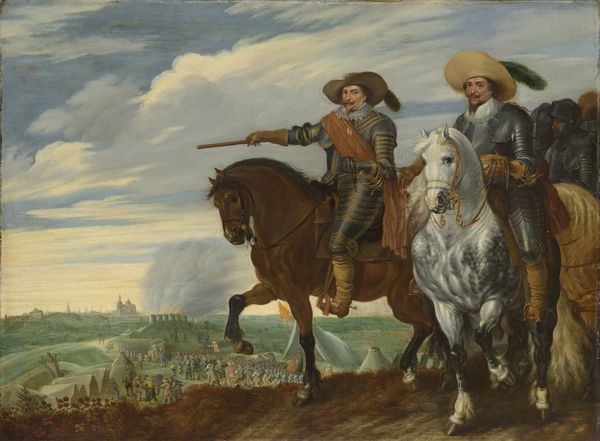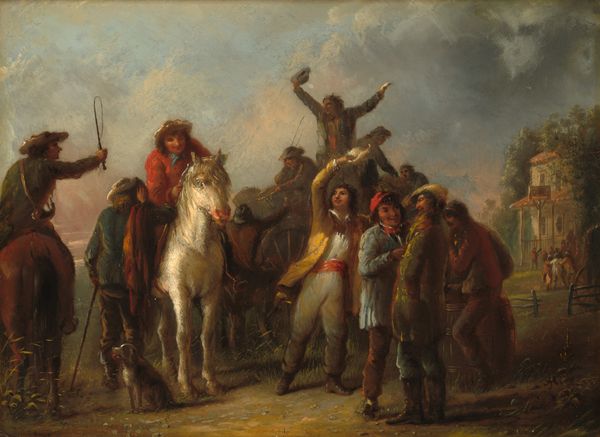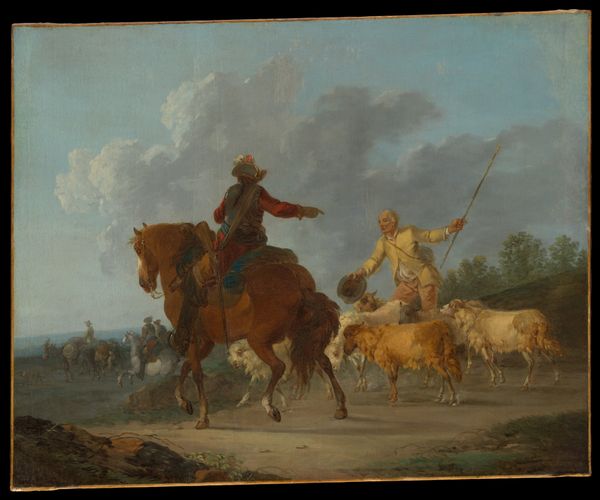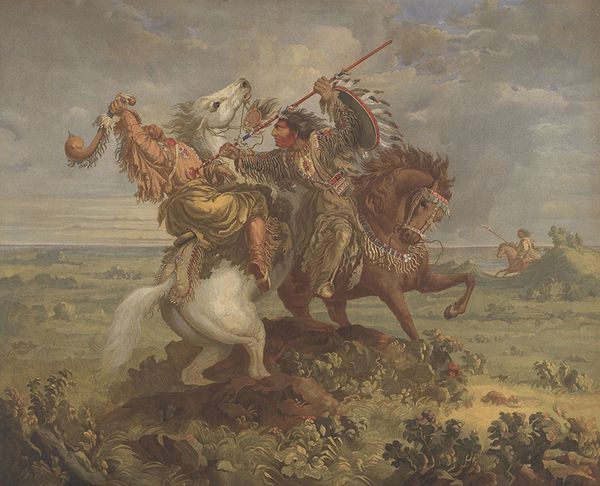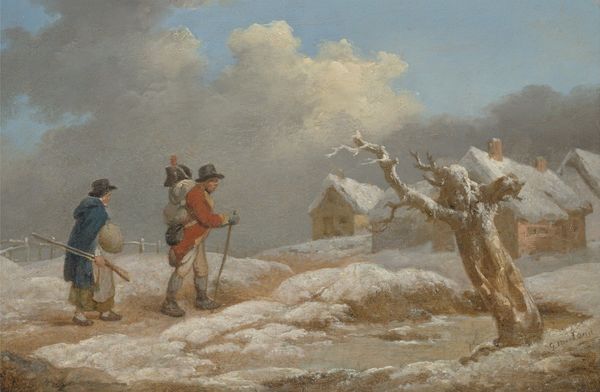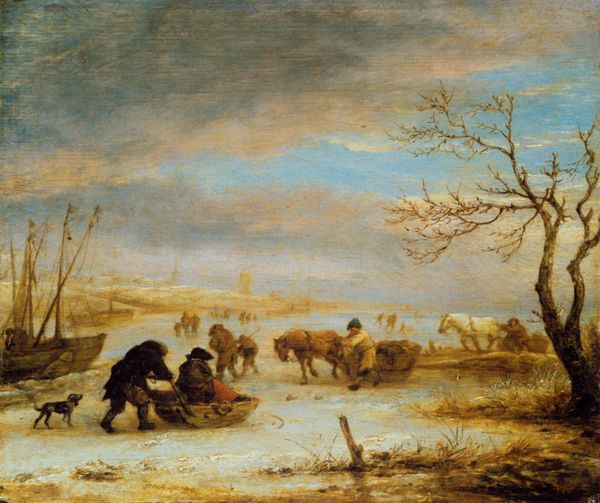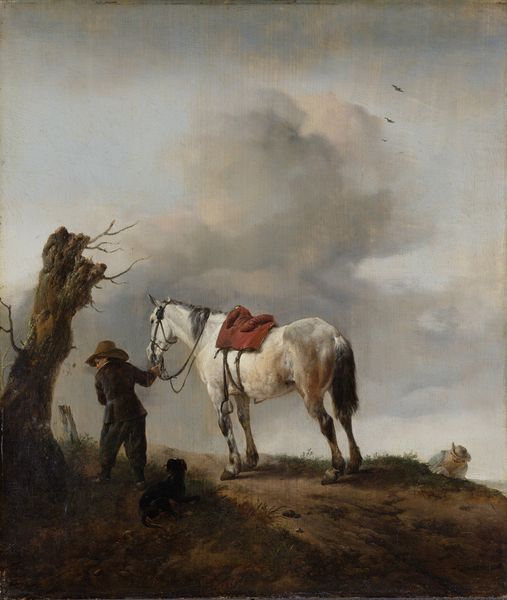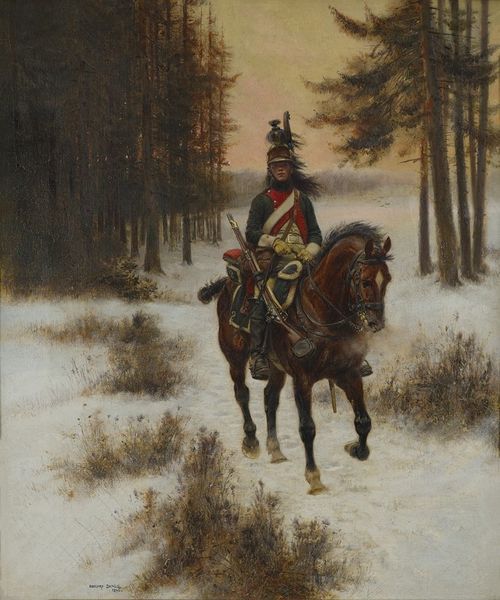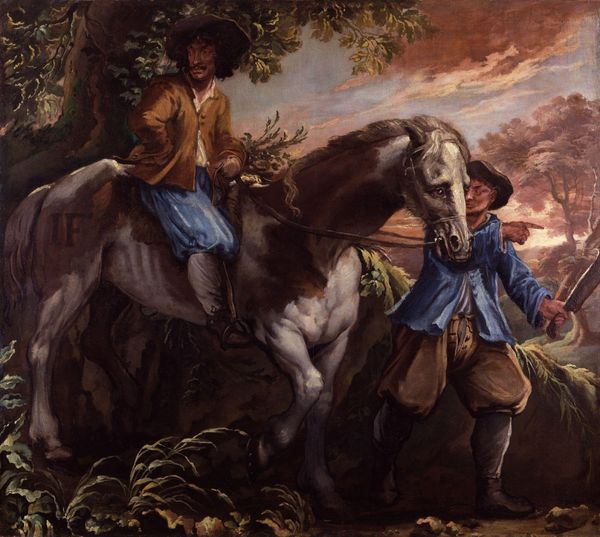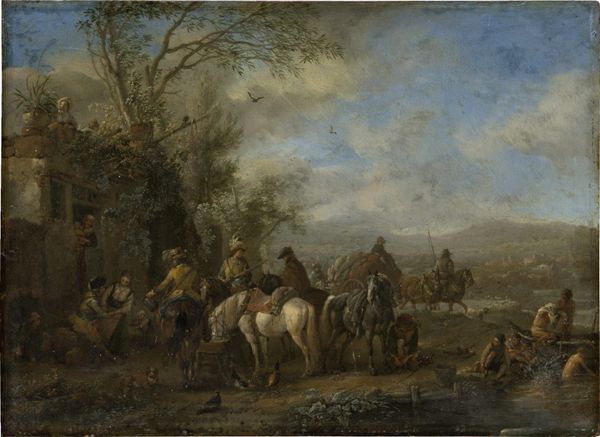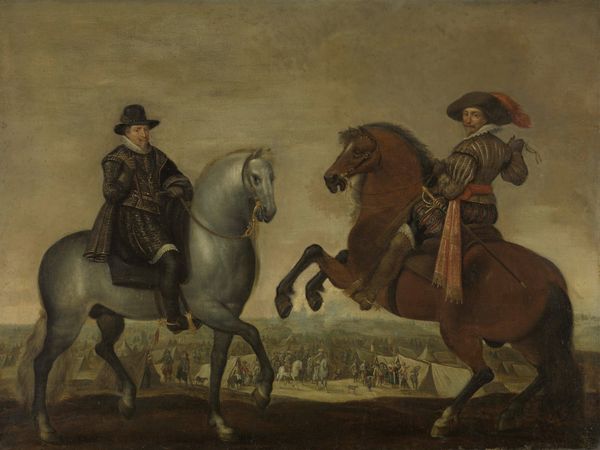
Dimensions: 25 x 30 in. (63.5 x 76.2 cm)
Copyright: Public Domain
Editor: We’re looking at “Trappers,” an oil painting by Jonathan K. Trego, dating from around 1852 to 1855. There’s this striking stillness despite the implied movement – figures on horseback with dogs – set against a wintery landscape. What’s your take on this work? Curator: I’m immediately drawn to the process of creation implied by this piece. Consider the pigments ground, the canvas prepared, the layering of oil paint. This represents a significant amount of labor – not just artistic, but the literal act of making the materials themselves. And look closer: this “romantic” scene hides the reality of the fur trade, a system deeply enmeshed with resource extraction and colonial expansion. What was the artist's relationship to these trappers, and what message was he trying to send to consumers? Editor: So, you see beyond the surface and focus more on the making and the economic context surrounding it? Curator: Precisely. Even the act of displaying this piece in a museum engages with systems of value and consumption. Who gets to decide what is art, and how does that impact the communities represented – or misrepresented – within it? Were these landscapes and figures simply "found," or were they actively shaped by the artist's perspective, desires, and economic drivers? Editor: That’s fascinating; it shifts my understanding completely. It’s less about the aesthetic beauty and more about the social and economic systems that enabled its creation and the continued dialogue it opens around historical narratives and consumption. Curator: Indeed. Art, like any commodity, has a complex life cycle tied to material conditions. By analyzing the means of production and distribution, we can uncover its deeper social implications. I think that looking at historical objects is one way to bring these obscured perspectives to light.
Comments
No comments
Be the first to comment and join the conversation on the ultimate creative platform.
